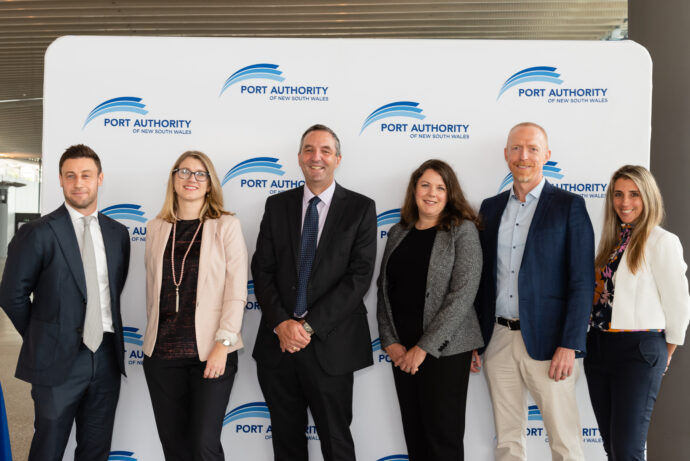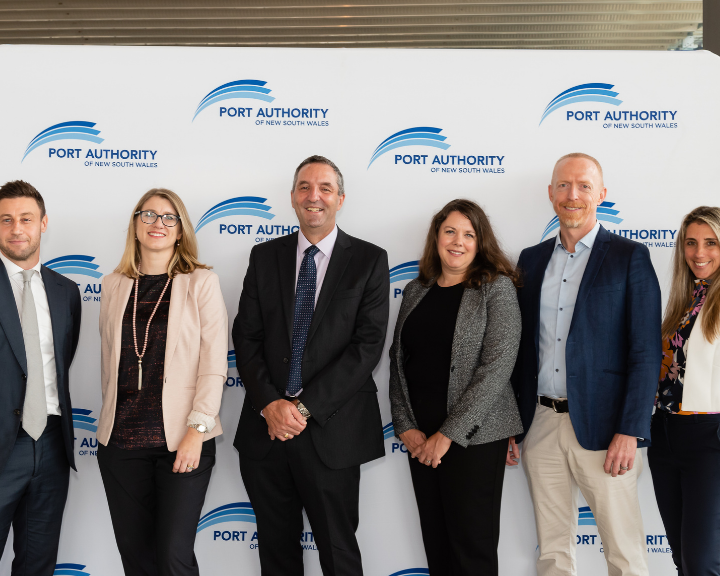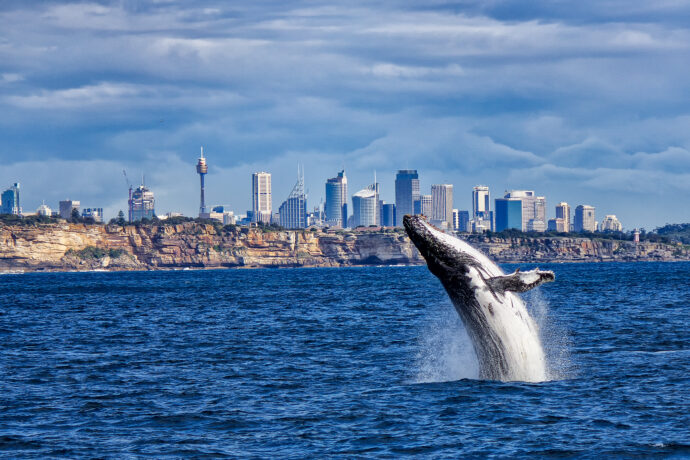
The Port Authority of New South Wales, who manages the navigation, security and operational safety needs of commercial shipping in the various ports of New South Wales, has taken key actions to reduce their emissions and accelerate their energy transition. Ryan Bennett, Senior Manager Planning & Sustainability, shares with us the advances in adjusting the Port Authority of New South Wales to their carbon emission reduction targets and the Net Zero targets. He also informs us that the Port Authority of NSW will be installing and supplying shore power for ships at all 5 major commercial berths at Bays Port in Sydney Harbour, which is a world-first for a dry-bulk precinct and a first in the Southern Hemisphere for a cruise terminal.
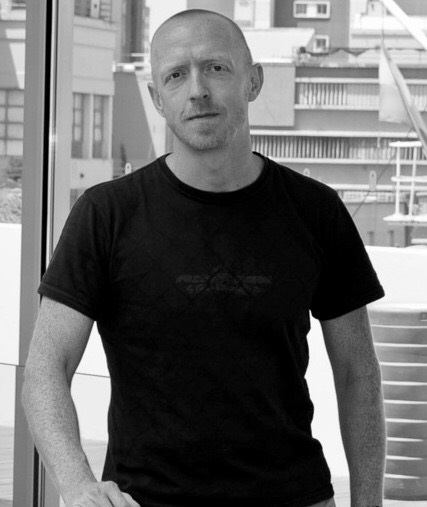
Port Authority of New South Wales is a member of the AIVP since 2019.
AIVP – The world is in a race against climate change. Reducing emissions and accelerating the energy transition are key actions as we will see in the next AIVP World Conference. You recently announced the Net Zero Commitments, an ambitious plan to drastically reduce your emissions in the coming years. Could you explain to us the main elements of this plan, its motivation and its importance in the global and Australian context?
Port Authority of New South Wales manages the navigation, security and operational safety needs of commercial shipping at the designated ports in NSW (Sydney Harbour, Port Botany, Newcastle Harbour, Port Kembla, Eden and Yamba). Port Authority also owns the port land at Glebe Island and White Bay in Sydney Harbour, Sydney Harbour’s two cruise ship facilities and manages and operates land within the regional ports of Eden and Yamba.
In 2020, Port Authority developed a sustainability plan, creating a framework for embedding sustainable practices and initiatives within our operations. It gives us a guide to how we can become more sustainable and provides a scalable operating model for defining, developing and delivering consistent and structured sustainability initiatives.
Our first key sustainability initiative to be developed has been our Net Zero targets and roadmap. The key elements of Port Authority’s Net Zero commitments are included below.

The key motivations that drove our consideration of carbon emission reduction targets and the endorsement of our Net Zero targets were:
- Act proactively to address climate change to help future-proof our organisation, community and operations
- Demonstrate leadership within the sector, including the critically important international shipping sector, and joining a select few port organisations nationally and regionally to have set a net zero target
- Play an active role in the required cooperation between ports and shipping to contribute to reducing greenhouse gas emissions from ships
- Join the groundswell of corporate and government entities making net-zero commitments
- Build community and stakeholder trust and respect for setting meaningful targets and following through with meaningful action
- Drive innovation within the organisation
- Improve staff retention and attraction
- Save resources through implementation of efficiencies
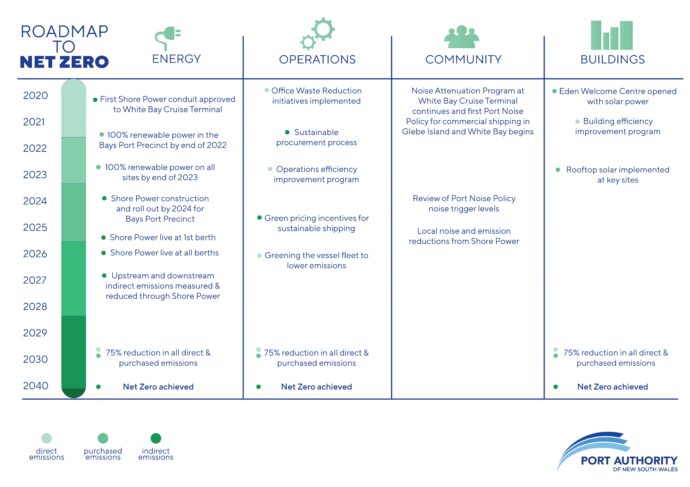
AIVP – A part of your plan to achieve Net Zero is to improve the efficiency of your buildings and operations, a topic addressed in the Port City Interface objective of the Agenda2030. Could you clarify how you plan to make these two sectors more efficient? Are you going to focus solely on new technologies or will you also include other innovations?
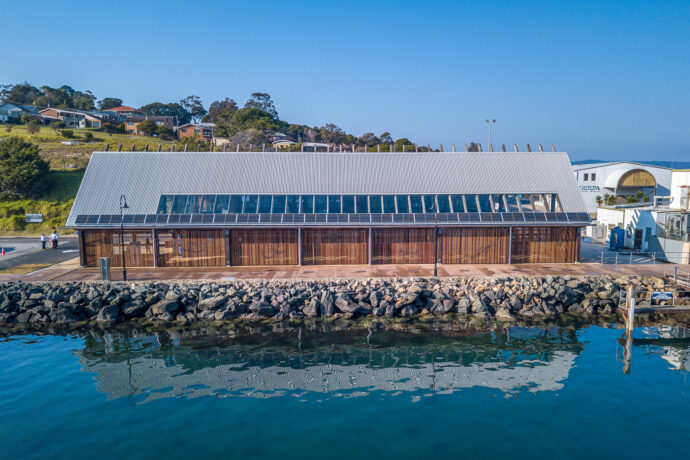
As part of our Scope 1 and 2 emissions baseline setting exercise, we identified the sites and buildings that account for the majority of our Scope 2 emissions (largely electricity use). We have now commenced energy efficiency assessments of these four key sites, that together comprise over 80% of our total electricity use across New South Wales. These ‘energy audits’ will:
- Provide us with a better understanding of consumption profiles, trends and drivers of energy consumption at each site;
- Identify ways of reducing energy consumption;
- Prioritise initiatives for implementation based on financial evaluation, energy saving potential and ease of implementation;
- Advise on a way forward to ensure the identified efficiency measures can be implemented within a reasonable timeframe; and
- Ultimately, significantly drive down our electricity consumption (Scope 2 emissions), save money and assist in meeting our Net Zero targets.
It’s expected that the efficiency measures will be a combination of swapping in and installing newer, energy efficient technologies, but also behavioural changes with how our sites are occupied, managed and run.
In terms of operations, Port Authority’s Scope 1 emissions account for approximately 46% of our total Scope 1 and 2 CO2-equivalent emissions. The vast majority of our Scope 1 emissions come from the fuel used in our working vessel fleet, highlighting the importance of our marine operations to our Net Zero targets. We acknowledge that reducing or eliminating these Scope 1 emissions will be far more difficult than dealing with our Scope 2 emissions.
Initially, our focus will be on implementing better data gathering tools and technology to understand more about the fuel consumption and efficiencies of our vessels. With better data, we will then be able to look at any potential operational efficiencies to reduce fuel consumption and thereby reduce emissions (and likely reduce costs and maintenance loads on the vessels). It’s too early to say what these might be but I’m sure vessel speeds and voyage/trip planning will be amongst the matters considered.
Whilst this work occurs, Port Authority will continue to keep abreast of technology changes (such as new fuels and propulsion technology) for working port vessels (e.g. pilot transfer vessels), such as hydrogen fuel cell, battery and carbon neutral green methanol technology.
AIVP – One of the main actions of your plan is providing onshore power supply, operating on 100% certified renewable energy, to limit the emissions of docked ships. This will also improve the air quality for the citizens. Can you explain to us the main elements of this project? How do you think it will impact the port-city-citizen relationships?
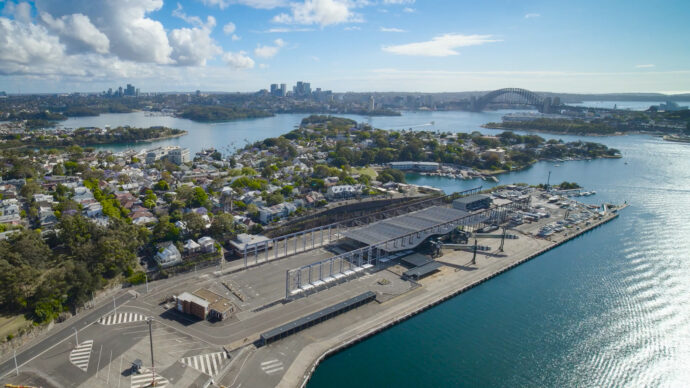
This is indeed one of the main actions and something that we are very excited about. In a world-first for a dry-bulk precinct and a first in the Southern Hemisphere for a cruise terminal, Port Authority of NSW will be installing and supplying shore power for ships at all 5 major commercial berths at Bays Port in Sydney Harbour (4 dry-bulk commercial berths and the primary berth servicing the White Bay Cruise Terminal), with the first berth set for launch in 2024.
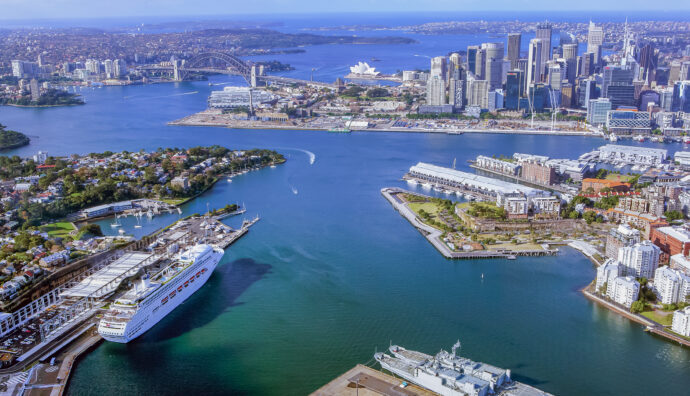
This will require a significant investment (early estimates of around $60 million AUD or 40.2 million € in today’s figures) to deliver the power to the berths and construct and commission the shore power infrastructure. Vitally, we have committed to the shore power being 100% renewable, which will eliminate thousands of tonnes of CO2-equivalent emissions from ships at Bays Port every year. Importantly, it will also almost eliminate local air pollution from these ships at berth and we are expecting it to also reduce the noise generated by the ships, which is a concern for our local communities. Introducing 100% renewable shore power to Bays Port precinct is one way Port Authority is helping to contribute positively to addressing climate change and reducing impacts on the local community. For more information, please check out our website.
AIVP – You are the first port in the southern hemisphere that is offering shore power to cruise terminals and to bulk shipping precincts. Could you explain us how will you encourage vessels visiting your port to use shore power? How is the coordination with the ship owners?
The development of this project wouldn’t be possible without the collaboration and support of our industry partners. Industry and government have engaged early in this project by signing a joint letter of intent, as the participation of both sectors is needed to ensure the successful transition to a lower emissions future.
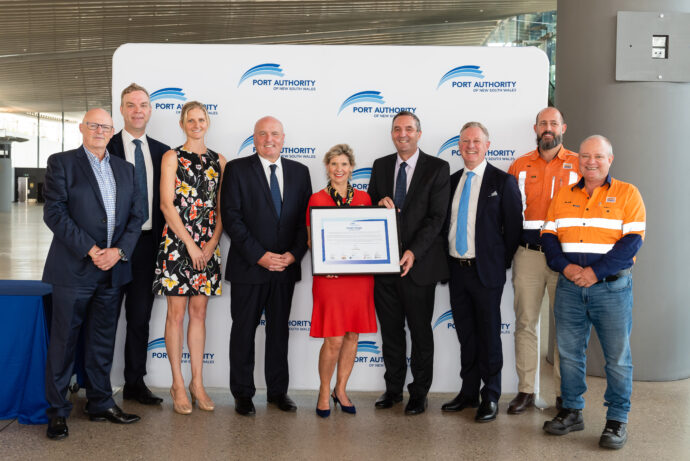
Our valued partners Cement Australia, CSL Australia, Carnival Australia, Royal Caribbean Group and MSC Cruises are committed to the future use of Shore Power in the Bays Port precinct and will be investing significantly to retrofit their vessels or scheduling their existing fleet to be ready to connect to our Shore Power facilities. Our commitment to delivering renewable shore power will also enable these major maritime businesses to deliver on their own carbon emission reduction and sustainability targets by facilitating a reduction in their own Scope 1 emissions (shipping) and Scope 3 emissions (dry bulk tenants).
AIVP – The title of our 17th World Conference was “Inspiring Blue Futures”, reflecting the importance of port cities for the blue economy and the protection of the oceans. How do you think your Net Zero Commitments will contribute to these two issues?
We feel that our Net Zero commitments contribute to these two issues in several ways, but most importantly, perhaps, is the demonstration of leadership within the sector and joining other port and shipping organisations in setting ambitious targets and looking at ways of collaborating to realise even greater reductions in greenhouse gas emissions from our sector.
Importantly, our Net Zero commitments and our shore power project will also play an important role in the ongoing innovation and integration of port operations at Bays Port in Sydney Harbour, with surrounding communities, future urban renewal and blue economy, knowledge-intensive industries.
